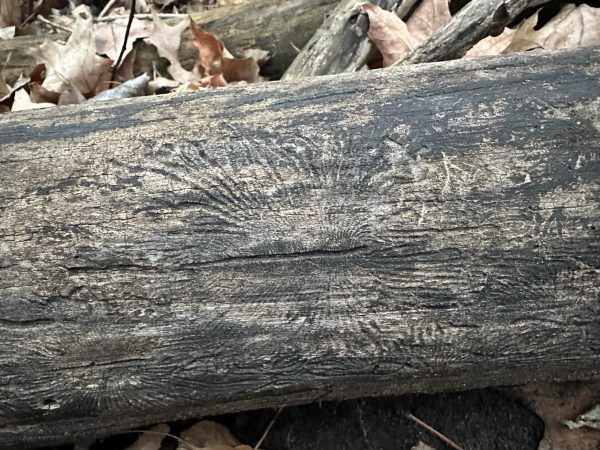Walking through the arboretum earlier this month, student naturalists came across weird designs etched in the wood of a fallen tree. Was this a practical joke on curious students, or a particularly artistic woodpecker? As we later learned, these were actually the galleries of bark beetles.
Bark beetles are a common type of beetle that live and feed on trees. To lay eggs, the female burrows into and then through the phloem, which is the inner, living bark. It creates a vertical “parental gallery” and lays eggs on either side as it moves. The newly hatched larvae eat their way outwards through the phloem and xylem, growing as they go and creating sunburst-like structures in the wood. After overwintering beneath the bark, they exit as adults, creating holes.
You can observe these structures above, and on your next trip to the Arb. When investigating these patterns, you can identify the parental gallery as the wider groove, with radiating galleries that grow wider as the larvae that made them grew.
A common type of bark beetle in the arboretum is the elm bark beetle. This beetle lives only on elms and is a vector for Dutch Elm disease, carrying fungal spores from tree to tree. The disease can cause a tree to die within a year by closing off the water-conducting xylem, and is a major threat to elms in the arboretum. Control methods include fungicides, tree removal and replanting with disease-resistant elms or other species.
Go see these beautiful and deadly designs in the forested areas of the Arb, and check out the linked articles to learn more!
—Klara Kjome Fischer ’26, for the Cole Student Naturalists













